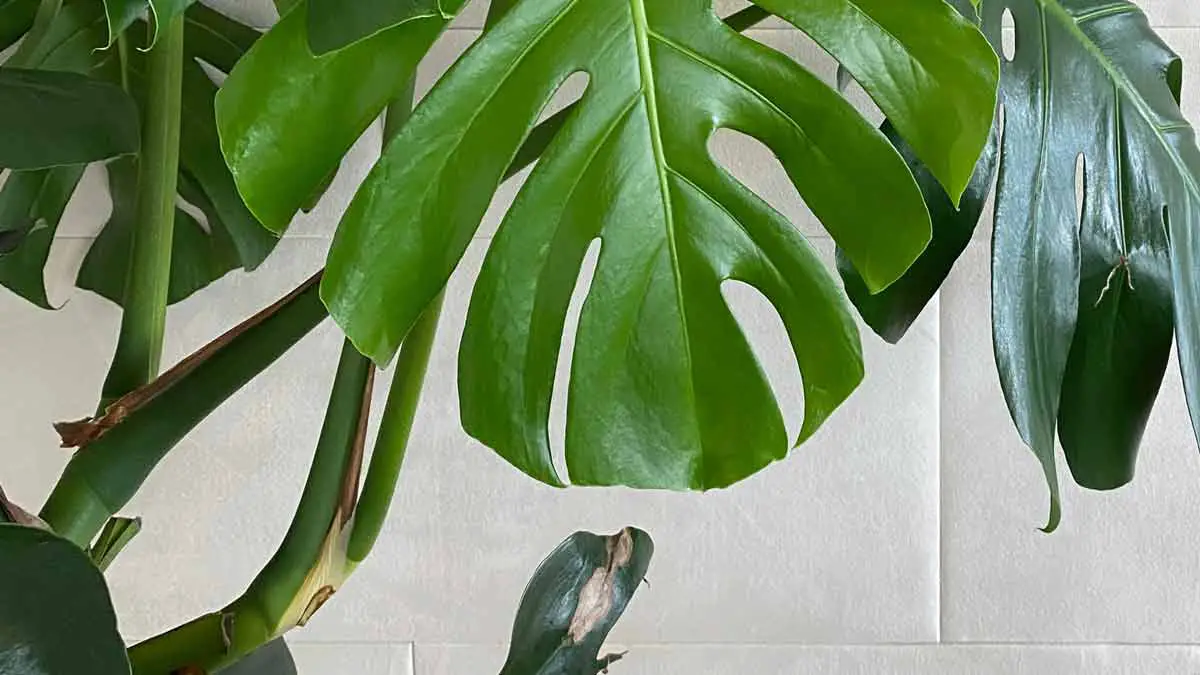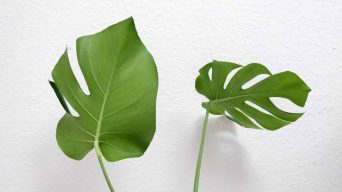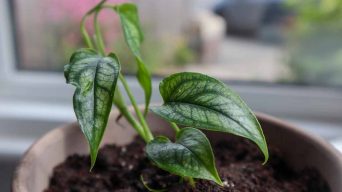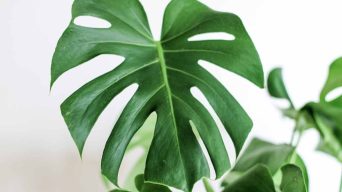Air layering is a propagation technique that grows aerial roots on a plant before taking a cutting. Monstera can be propagated this way by selecting an aerial root, wrapping it with moist moss, covering it with plastic wrap, and planting it once the roots grow. This method has a higher success rate and produces healthier plants.
Monstera enthusiasts, your indoor jungle just got better.
Imagine propagating your beloved Swiss cheese plant without the hassle of traditional stem cutting methods.
The good news is here – introducing Monstera air layering, a game-changing way to create new growth on this stunning indoor plant!
Stick with us as we unravel the secrets of successful Monstera propagation and guide you through the exciting air layering process.
Say goodbye to root rot risks; let’s dive into this incredible world together and help you expand your green oasis like never before.
Understanding Monstera Air Layering
Monstera air layering propagates plants by encouraging the growth of aerial roots, which can then be cut off and rooted in their own pot, resulting in a new plant.
Benefits Of Monstera Propagation Via Air Layering
Air layering provides several benefits when it comes to propagating your Monstera plant.
One key advantage is the higher success rate, as this method lowers the risk of shock and infection compared to other means of propagation.
Air layering fosters strong and healthy root growth that can better withstand transplantation by allowing the roots to grow in a more controlled environment while still attached to the parent plant.
Another significant benefit of Monstera propagation via air layering is its ability to stimulate new growth without prematurely removing any part of the plant.
Unlike Monstera cuttings propagation which requires snipping near a node, air layering lets you propagate your plant without causing harm or stress to the mother plant.
This process ensures that the original and newly propagated plants have ample opportunity for continued growth and vitality.
Furthermore, air layering caters well to Monstera plants’ natural tendency for developing adventitious roots – an inherent trait among these species.
When direct contact with moist sphagnum moss or another suitable medium is allowed, aerial roots will begin transforming into soil roots even before cutting from the parent plant occurs.
This unique characteristic drastically increases both rooting efficiency and overall health of propagated Monsteras while maintaining harmony within their native habitat.
Challenges Of Monstera Propagation Via Air Layering
While monstera air layering is an effective way to propagate your beloved plant, it comes with its own challenges.
One notable difficulty is maintaining the appropriate moisture level within the sphagnum moss used in the process.
Too much moisture can lead to rotting, while too little might not be enough for aerial roots to develop properly.
Another challenge associated with monstera air layering is choosing the right stem and location on your plant.
Selecting a healthy stem capable of supporting new root growth can be tricky, especially if you’re inexperienced.
Additionally, finding the ideal spot on a stem where aerial roots are most likely to form can make all the difference between successful propagation and failed attempts.
Lastly, patience plays a significant role when propagating monstera plants via air layering.
This method requires more time than water or soil propagation methods but often leads to more robust and healthier offspring.
If you rush through any step of this intricate technique or aren’t prepared for several weeks until results show up, this option may not suit your needs as a plant enthusiast looking for speedy growth from their Monstera cuttings.
The Science Behind Monstera Propagation
Monstera propagation is about stimulating new roots’ growth from a stem or cutting.
With air layering, plant enthusiasts can encourage root development while keeping the cutting attached to the parent plant.
This propagation method provides more control over where and how many roots will grow on the stem, which leads to stronger plants with a better chance of survival once transplanted.
The science behind monstera propagation via air layering involves manipulating plant hormones and encouraging adventitious rooting.
The process starts by wounding a section of the stem below a node, which triggers an increase in cytokinins while lowering auxin levels in that area.
Hormone balance changes cause cells around that site to divide rapidly, forming callus tissue and developing meristematic cells into root primordia.
By providing optimal growing conditions (e.g., moisture and oxygen), those primordia will elongate into fully formed roots that can support their weight when separated from the mother plant.
Air layering requires patience but promises success when done correctly.
As we understand more about how plants grow and respond to stimuli like hormone manipulation, we’re discovering new ways to propagate them with greater efficiency and higher chances of success!
Propagating Monstera Plants Via Air Layering: A Step-by-Step Guide
To propagate your Monstera plant via air layering, you must choose a healthy stem with an aerial root and then prepare it by applying rooting hormone before wrapping it in moist sphagnum moss and plastic wrap.
1. Choosing A Healthy Stem
Selecting a strong and healthy stem is one of the most critical factors in successful Monstera air layering.
Follow these tips to ensure you choose the right one:
- Look for a stem at least 1/4 inch thick, as thinner stems may not produce strong enough roots.
- Choose a stem actively growing and producing new leaves, as this indicates good health.
- Select a stem with several nodes (the points where leaves attach to the stem), as these are where the aerial roots will form.
- Avoid any stems with signs of damage or disease, such as discoloration or soft spots, as these can hinder root growth and overall plant health.
- If possible, choose a stem that has already produced aerial roots naturally, as this suggests it will be more receptive to air layering.
Following these guidelines when choosing your Monstera stem can help increase the chances of success in air layering and lead to stronger root growth in your propagated plants.
2. Preparing And Applying Rooting Hormone
Preparing and applying rooting hormone is crucial in propagating Monstera plants via air layering.
Rooting hormone helps to promote root growth and increase the chances of success.
To prepare, you must choose a suitable rooting hormone powder or gel from your local nursery or online store containing Indole-3-butyric acid (IBA).
Once you have your rooting hormone, carefully read the instructions on how to use it.
Next, make a small incision about one inch above where you want the roots to grow on the stem.
Apply some rooting hormone onto the exposed stem with a clean brush or cotton swab, covering it well.
3. Wrapping With Moist Sphagnum Moss And Plastic Wrap
After applying the rooting hormone to the stem, the next step in propagating your Monstera plant via air layering is wrapping the stem with moist sphagnum moss and plastic wrap.
Here’s how you can do it:
- Prepare a handful of moist sphagnum moss and squeeze out excess water.
- Place the moss on a plastic wrap large enough to cover the stem.
- Wrap the moss around the stem, covering at least two nodes where aerial roots can emerge.
- Secure the moss with string, twist ties, or twine, making sure it’s tight enough to hold but not too tight that it damages the stem.
- Cover the entire wrapped area with another layer of plastic wrap, sealing all edges tightly.
This wrapping method creates a humid environment around the wound site and encourages root development.
It also protects the new roots from drying out before they have a chance to establish themselves.
Remember to check on your air layer every few days and spray the sphagnum moss with clean or distilled water to keep it moist.
After 4-8 weeks, depending on temperature and humidity conditions, you should see new roots emerging from the wrapped area.
Once there are enough healthy roots, you can cut below them and transplant your new Monstera plant into soil or water propagation.
4. Caring For And Transplanting The Air Layer
After the air layer has formed roots and is ready for transplanting, handling it with care is important.
Remove the plastic wrap and gently remove any moss that may have attached to the roots. Be sure not to damage the new root system as you separate it from the mother plant.
When transplanting, choose a container with good drainage holes and use a well-draining potting mix to support your new plant.
Keep the soil moist but not waterlogged, and avoid fertilizing until your Monstera shows signs of new growth.
Your newly propagated Monstera should thrive in its new home with proper care!
Tips And Tricks For Successful Monstera Air Layering
Maximize your chances of success with Monstera air layering by considering timing and temperature, choosing the right container, and following proper potting and maintenance practices.
Read on to learn more!
1. Timing And Temperature Considerations
Timing and temperature are essential considerations for successful Monstera air layering.
The best time to start the process is during the plant’s active growth period, typically in spring or summer.
This is when the plant’s energy is focused on root and foliage development, making it easier for new roots to grow.
The ideal temperature range for Monstera air layering is between 64 and 85ºF.
Temperatures outside this range can slow down root growth or cause damage to the Monstera cutting.
For optimal results, ensure that the plant receives bright yet indirect light during this time, as exposure to direct sunlight can lead to leaf burn.
In summary, timing and temperature are critical factors that determine whether your Monstera propagation will succeed.
By understanding these factors and following our step-by-step guide in propagating Monstera plants via air-layering outlined above, you’ll have a thriving Swiss cheese plant in no time!
2. Choosing The Right Container
When choosing the correct container for your Monstera air layering project, there are a few things to consider.
First and foremost, you want to make sure that the container is big enough to accommodate the stem and sphagnum moss wrap comfortably without making it too tight or too loose.
Secondly, ensure your container has good drainage holes, as excess water can lead to root rot.
The use of plastic containers may not be ideal as they can trap moisture easily, but instead, opt for something breathable like ceramic pots.
Another crucial factor in selecting the right container is ensuring that it provides adequate support for your Monstera aerial roots during propagation.
As these unique roots naturally grow towards light sources and attach themselves to surrounding objects, a mesh pot or basket with plenty of openings will provide ample space to hold on while supporting new growth.
Moreover, choosing a transparent vessel allows you to monitor root development through visual inspection conveniently – this way, you’ll know when it’s time for transplanting!
3. Potting Tips And Maintenance Requirements
Potting and maintenance requirements are crucial factors for successful monstera air layering.
Here are some tips to ensure healthy growth and long-term maintenance of your propagated monstera plant:
- Use well-draining soil: Monstera plants thrive in well-draining soil rich in organic matter. A mix of peat moss, perlite, and vermiculite will provide the necessary nutrients while allowing excess water to drain.
- Choose the right pot size: To prevent root rot, choose a pot with proper drainage holes that is only slightly larger than the air layer you transplanted. This will help maintain moisture levels as well as prevent overwatering.
- Water regularly but avoid overwatering: Monstera plants prefer moist soil but can quickly develop root rot if left sitting in waterlogged soil. Check moisture levels using a finger test or a moisture meter and only water when the top inch of soil is dry.
- Provide ample sunlight: Monstera plants require bright, indirect light to thrive but can also tolerate partial shade if necessary. Placing your plant near a bright window or providing artificial lighting will promote healthy growth.
- Fertilize regularly: Monstera plants benefit from regular fertilization during their active growing season (spring and summer). Use a balanced fertilizer every 2-3 weeks to promote leaf growth and overall plant health.
By following these tips, you can ensure your propagated monstera plant grows into a healthy and vibrant addition to your indoor garden collection!
Final Thoughts
Air layering is a unique way to propagate your Monstera plant.
Following the simple steps outlined in this guide, you can create a new rooted plant without damaging or separating it from its mother plant.
Air layering offers many benefits, such as higher rooting success rates and stronger root growth which are not commonly seen with other propagation methods.
With the right timing, temperature, and container selection, you will be well on your way to propagating healthy new Monstera plants that showcase their unique aerial roots no matter where they are located in your home or garden.
Give air layering a try today–you won’t regret it!







